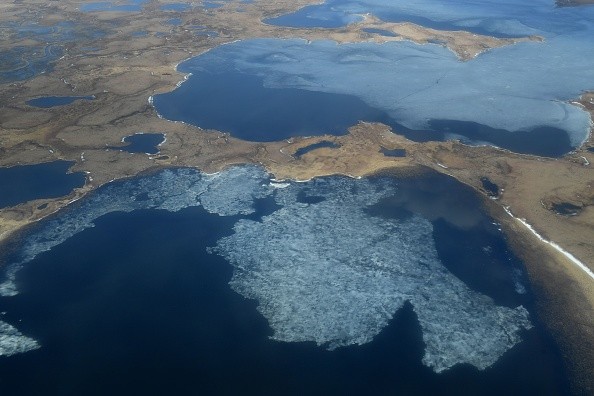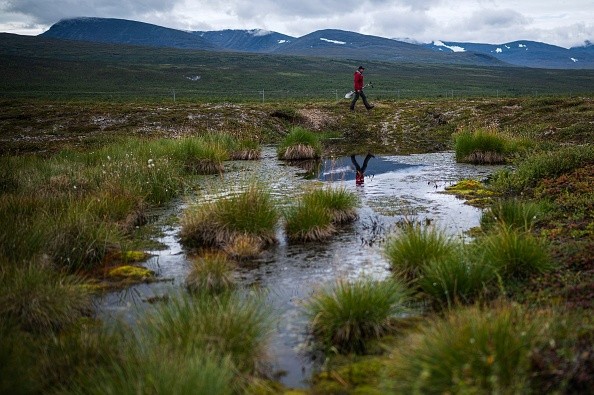According to a comprehensive scientific review, the thawing of Arctic permafrost, which contains billions of tons of greenhouse gases, threatens not only the region's crucial infrastructure but life on the entire globe.
According to one of a half-dozen studies on permafrost published this week by Nature, almost 70% of the roads, pipelines, communities, and industries built on the region's softening ground will be very susceptible to serious damage by mid-century.

Impacts of Thawing Permafrost
The evaporation of long-frozen soil, according to another study, might accelerate warming and overwhelm global attempts to keep the Earth's temperature rise within acceptable ranges by releasing methane and CO2.
Permafrost is now a threefold hazard, according to the study, as the combustible organic debris that was previously sealed away by ice has been exposed.
Permafrost covers a fifth of the land area in the northern hemisphere and has twice as much carbon in it as the atmosphere now has, and three times as much as human activity has emitted since 1850, according to Phys.org.
Permafrost is defined as ground that has been colder than zero degrees Celsius (32F) for more than two years, yet much of it is thousands of years old. Temperatures in the Arctic have climbed two to three degrees Celsius over pre-industrial levels over the previous half-century, compared to the rest of the world.
A sequence of extraordinary weather anomalies has occurred in the region, with temperatures in winter reaching 40C above previous averages. Permafrost has warmed by approximately 0.4C on average between 2007 and 2016, according to study conducted by Kimberley Miner, a scientist at the Jet Propulsion Laboratory of the California Institute of Technology.
Also Read : Permafrost Melting in Arctic Can Release War-Era Nuclear Remnants and Other Deadly Viruses
Driver of Increased Melting
Even if greenhouse gas emissions drastically decrease in the following decades, their analysis predicts that by 2100, some four million square kilometers of permafrost will be lost.
Melting isn't solely a result of rising temperatures. Researchers note that Arctic wildfires rapidly expand the permafrost layer prone to thawing.
A warming climate will lead to an increase in the number of isolated, uncontrolled fires, which will release more permafrost carbon into the atmosphere. During the coldest months of the year, "zombie fires" will smolder in the ground, only to re-ignite in the spring and summer.
As Miner and colleagues point out, these underground blazes could liberate previously stored carbon from previously assumed to be fire-resistant habitats. The study found that the strength of soil decreases significantly as temperatures increase over the melting point and ground ice melts.

The Unprecedented Collapse
About 21,000 tons of diesel were spilled into neighboring waterways in 2020 after a fuel tank collapsed suddenly near Norilsk, Siberia.
The plant's foundation was said to have been weakened by the thawing permafrost. Tens of thousands of kilometers of roads and pipelines in North America are at risk from permafrost erosion, notwithstanding the absence of significant industrial centers.
Basic questions about how much carbon may be released when Arctic soil warms remain unsolved, despite the fact that scientists now know more than a decade ago. A lack of consideration for the effects of rising temperatures on permafrost dynamics has resulted in an underestimation of these effects, according to Miner and colleagues.
It's also unclear whether or not the Arctic will get drier or wetter as a result of climate change. The ramifications of the solution are enormous. Decomposing soils in a browner, drier Arctic will release CO2 into the atmosphere, which will exacerbate flames.
Related Article : Thawing Permafrost Due to Global Warming May Release Pathogens and Radioactive Waste
For more news, updates about permafrost and similar topics don't forget to follow Nature World News!
© 2025 NatureWorldNews.com All rights reserved. Do not reproduce without permission.





